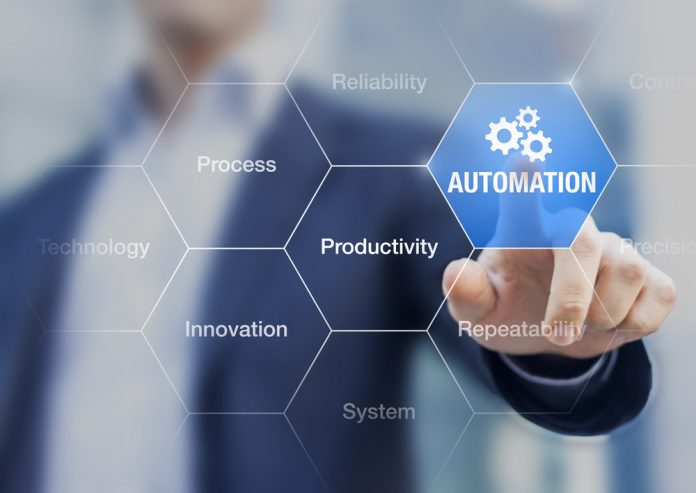
Traditional processes can no longer meet the standards of consumer or employee expectations. Advancements in technology have forever transformed how we work, buy and sell, and access services. Our assumptions about the employee experience and customer expectations will never be the same.
If companies want to stay ahead of changing market demands, they must streamline business operations and provide improved performance and satisfaction for employees and customers.
How?
Artificial intelligence, automation, and other digital tools complete repetitive tasks much more efficiently and accurately than humans. These technologies also allow employees to upskill more readily, ultimately driving innovation. In a 2021 PwC survey of 32,500 employees worldwide, 60 percent of Americans believed new tech developments would improve their job prospects and were less worried about automation than their global counterparts.
In an increasingly tech-driven world with new complexities from a hybrid workforce, automation will be an inevitable competitive advantage for your company’s protocol. The first step for business leaders to take full advantage of automation and what it can do for their bottom line is to overcome the fear of robots taking over the industry.
Automation is not a threat.
If allowed, new technologies can swiftly replace human laborers within multiple industries. According to a McKinsey study, at least one-third of tasks could theoretically be automated in about 60 percent of all occupations. Since machines have been programmed to manage tedious responsibilities, more businesses plan to adopt automation, disrupting the corporate world.
The same McKinsey study estimates that up to 30 percent of the globally worked hours could be automated by 2030, depending on the speed of adoption. Positions most susceptible to automation include physical labor in predictable environments—i.e., operating machinery or preparing fast food. While the cost of labor has risen, the cost of robots has fallen, making automation even more tempting for businesses and the workforce’s fear of being replaced even more realistic. Even so, any business leader who fails to invest in automation needs to seriously rethink their priorities.
Workforce optimization has long been among the most challenging problems for businesses. Corporate decision-makers who don’t fear the additional benefits of machines in the workplace are still overwhelmed in choosing the right software and tech, further delaying adoption. Without the latest digital capabilities, companies can overload their workforce and spike dissatisfaction, resulting in less productivity and falling behind competitors. Automation enhances workflows and productivity, allowing skilled employees to focus on higher-priority tasks and learn the necessary skills to be proficient in a new position. The company will discover new ways to innovate, and internal functions will run much smoother with someone else taking the wheel for smaller objectives. Not everything can be automated—though that is the ideal many who fear automation believe.
The reality is that automation allows businesses to work more efficiently while offloading wearisome tasks. Future workers will spend more time on activities that machines are less capable of, such as managing people, applying expertise, and communicating with others.
Benefits of Automation Optimization
The paradox of automation by Josh Kaufman states that “…the more efficient the automated system, the more crucial the human contribution of the operators. Humans are less involved, but their involvement becomes more critical.” While tech has taken the burden of many organizational tasks, the need for human capital still remains to achieve business success. Automation shifts employees to handle new needs and launch new solutions to improve current processes. And it can do much more.
Automate payments and invoicing
Organizing bill payments, reimbursements, and other fees are tedious tasks that businesses should automate for the highest level of efficiency and satisfaction. Done manually, these tasks can produce mistakes and inefficiencies. With the right automation software, you can set it and forget it—increasing efficiency and reducing the odds of errors.
Billing automation, or “self-service software,” helps shorten the payment process regardless of the state of the economy and eliminates yet another objective your team has to remember. Billing automation software can send automatic payment reminders to customers and allow them to make payments on the fly without reciting their credit card numbers over the phone or typing in their data every time. These tools will cut down the time your employees spend sorting through expenses and ensure that you are never late when making or receiving a payment.
Streamline Repetitive Assignments
Administrative tasks, HR procedures, security, maintenance, etc., are all extraordinarily time-consuming and tiresome, especially when done daily. Because they usually require little effort or skill, human employees default to autopilot without catching possible inaccuracies. Setting up an automated system is much more convenient and less costly than risking human error.
Implementing automation technology saves your business significant time and money and boosts overall employee satisfaction, directly affecting customer satisfaction.
Provide A Reliable Employee Training Experience
Training is critical for business growth. The market, business regulations, and standard organizational development push the need for a consistently updated and reliable learning experience. Automated learning technology, such as digital LMS platforms, speeds up the onboarding process for new hires to learn their roles or for existing employees to upskill. These platforms deliver training materials to employees anywhere, at any time, to complete at their convenience.
As more policy changes are made in the future, LMSs are also efficient ways to update materials for all employees to see. As a centralized repository for your training resources, you can update your content and resources in that single location and know that your whole organization has access to the updates.
There is a clear and absolute need for automation and humans today, tomorrow, and the foreseeable future. Regardless of whether you’re a small, medium, or large-sized organization, the potential time and cost savings of automated processes are limitless. In 2021, 88 percent of SMBs said automation allows them to compete with larger companies by enabling them to move faster. Rather than displacing human labor, automation frees your hands to focus on meaningful, creative work that necessitates higher-order thinking.
Embracing automation is only a question of when—not if. You don’t want to be the last person in your industry to implement a game-changing solution for your business’s future growth. The time to act is now.




